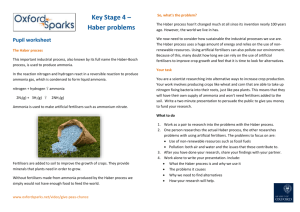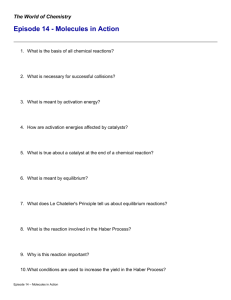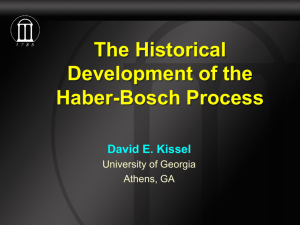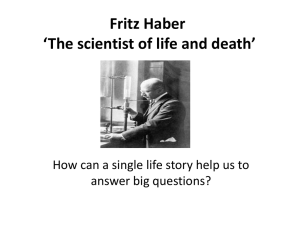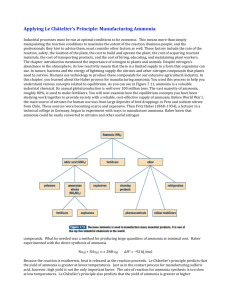1. Who developed the Haber Process? When? What country
advertisement
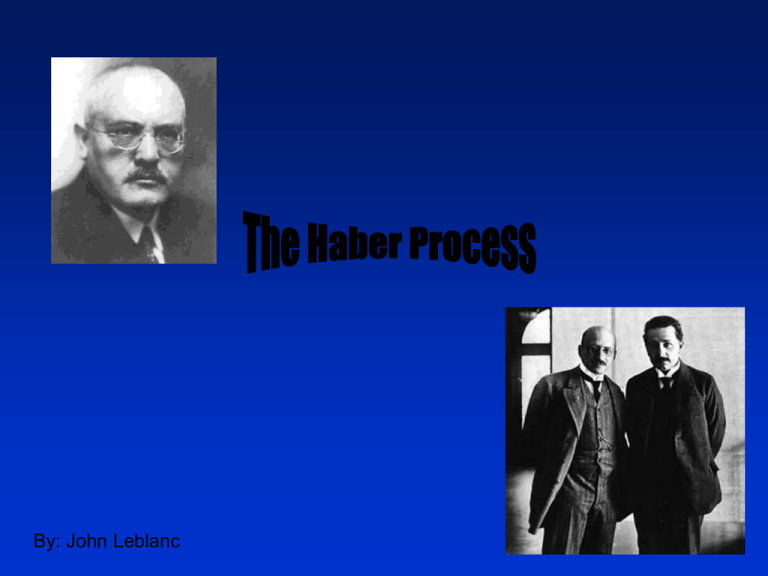
By: John Leblanc 1. Who developed the Haber Process? When? What country was he from? The Haber Process is a very important process indeed, it was invented by a german chemist by the name of fritz haber in the ealry 20th century during world war 1. 2. Write a balanced chemical equation for this reaction, including the energy term. Is it an endothermic or exothermic reaction? Below I have here an example of a balanced chemical equation for the Haber process: N2 + 3H2 => 2NH3 this reaction is exothermic The Haber Process is a method of creating ammonia from nitrogen and hydrogen using iron as a catalyst, under a certain temperature and pressure. 3. Use Le Châtalier’s Principle to explain the conditions that favour the forward reaction. 4. Temperature is important in regulating this reaction. Is the reaction carried out at high or low temperatures? How does this relate to part of your answer for Question 3? 5.Under what temperature and pressure conditions is this reaction typically carried out? N2 + 3H2 => 2NH3 This equation favors the forward reaction, so more ammonia will in the end be produced therefore in this equation we want the equilibrium to be on the right. A person could add more N2 or H2 doing so would raise the reacANT concentrations and would force the system to breakdown or take in the added reactant to re-establish equilibrium once again. Because N2 is found in air, it is a great reactant to use to re-adjust equilibruiim. This equation being exothermic just means that by reducing the temperature would make it favor the forward in return producing ammonia, increasing the temp, would do the complete opposite favouring the reverse, and consuming instead of producing ammonia. Meaning this is working on low temp.(room temp) 6. What catalyst is used for this reaction? An iron catalyst is used to increase the rate of the reaction while it is at room temperature without the equilibrium being affected. In return this will not make more NH3, but it does increase the rate of the reaction as I said. 7. a) Provide a short paragraph providing some historical background. B)Why was this an important chemical process? 8. Is the Haber Process still important today? Explain. The Haber Process is a method of producing ammonia developed in WWI. The Germans needed nitrogen for making their explosives during world war 1. When the Allies blocked off all trade routes going to and from Germany, they lost all sources of sodium nitrate and potassium nitrate, which was their source of nitrogen. So they were forced to find an alternate source of nitrogen, they went to the air, the nitrogen they found was 80% nitrogen!! Mr. Fritz Haber being a chemist developed the Haber Process in WWI, as was mentioned earlier in my presentation, “which takes molecular nitrogen from the air and combines it with molecular hydrogen to form ammonia gas, which the chemical formula is NH3” The reason for this being an important process (for the Germans) is because it gave them an alternaate source of nitrogen therefore continuing the process of their explosives. Which were halted when their supplies and such were blocked from entering or exiting germany. “The Haber process is important today because the fertilizer generated from ammonia is responsible for sustaining onethird of the Earth's population.” Now I’m no genius but one third of the worlds population sounds like a lot of people right? Absolutely correct!! And I think just that alone should answer the big question “ is the haber process still important today?” of course it is. So yeah, thanks for watching my presentation, I hope it gave you a little more information about the haber process and it’s creator, that you didn’t know before, so yeah, thanks
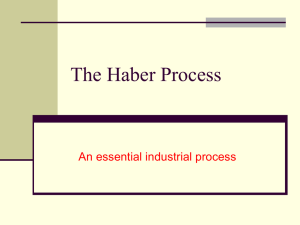
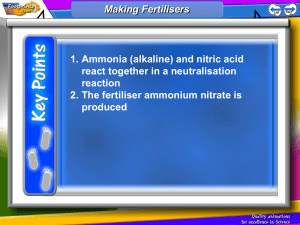

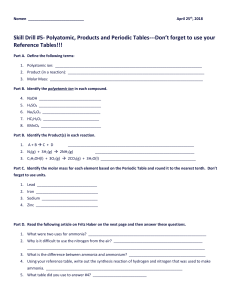
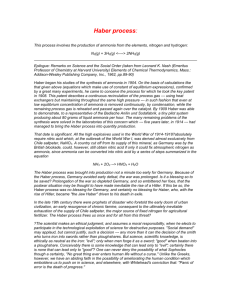
![mic_class10_10.ppt [Compatibility Mode]](http://s3.studylib.net/store/data/008220705_1-eb9498ce6cd0ab3209762ef99981a3a3-300x300.png)
